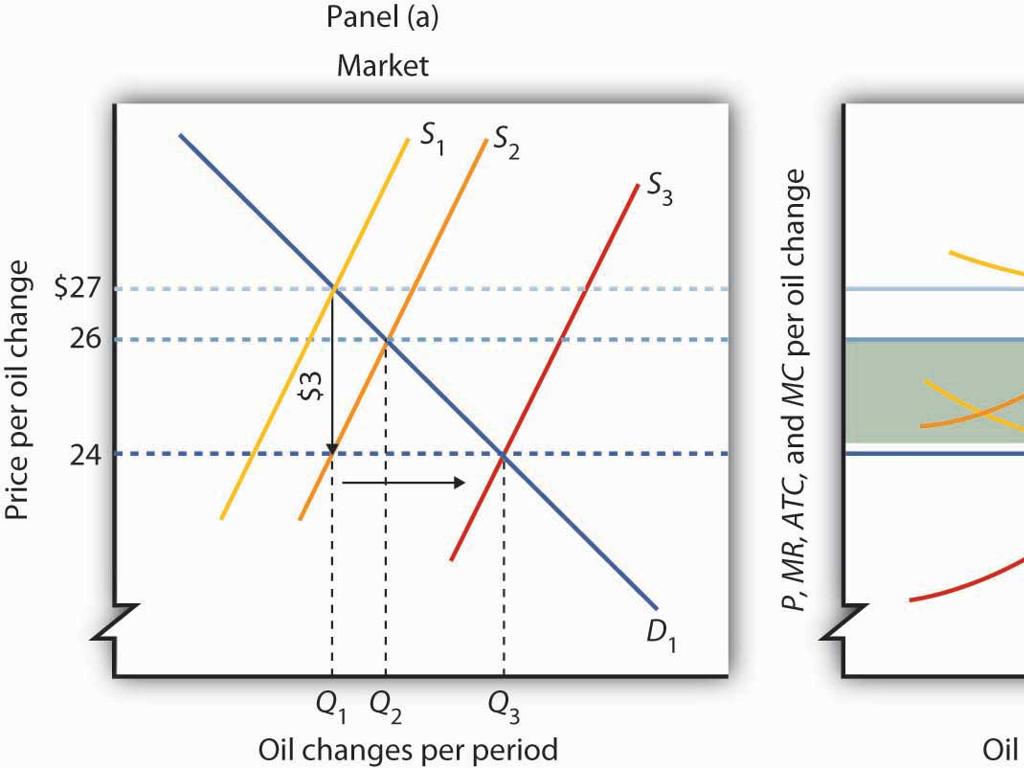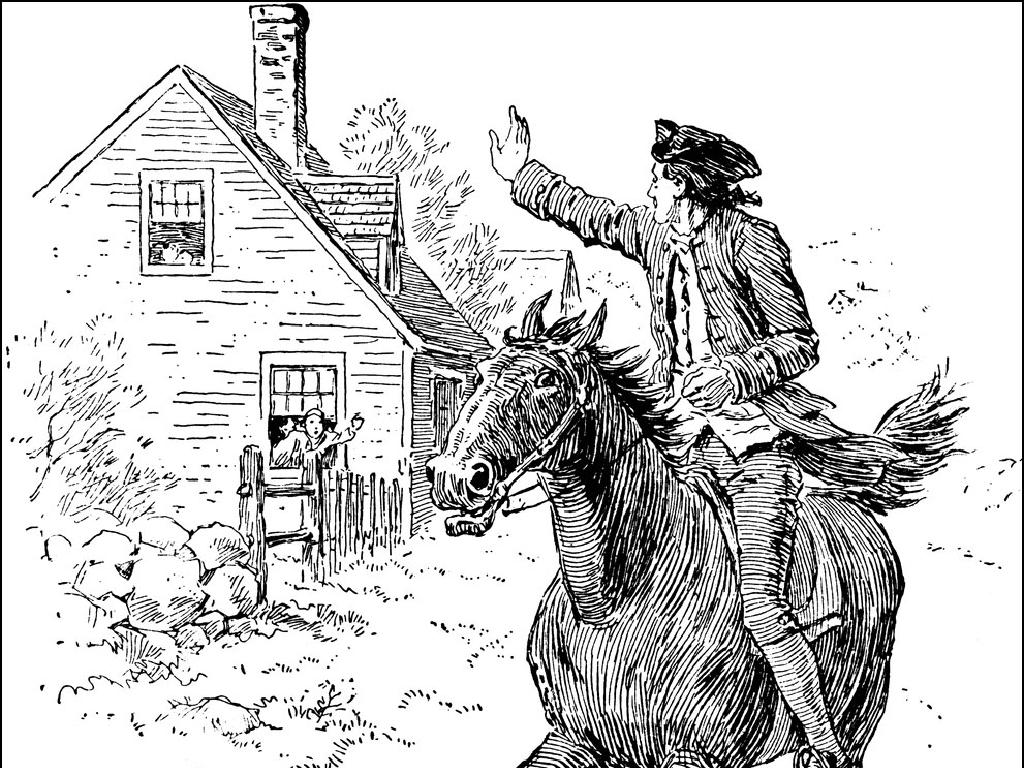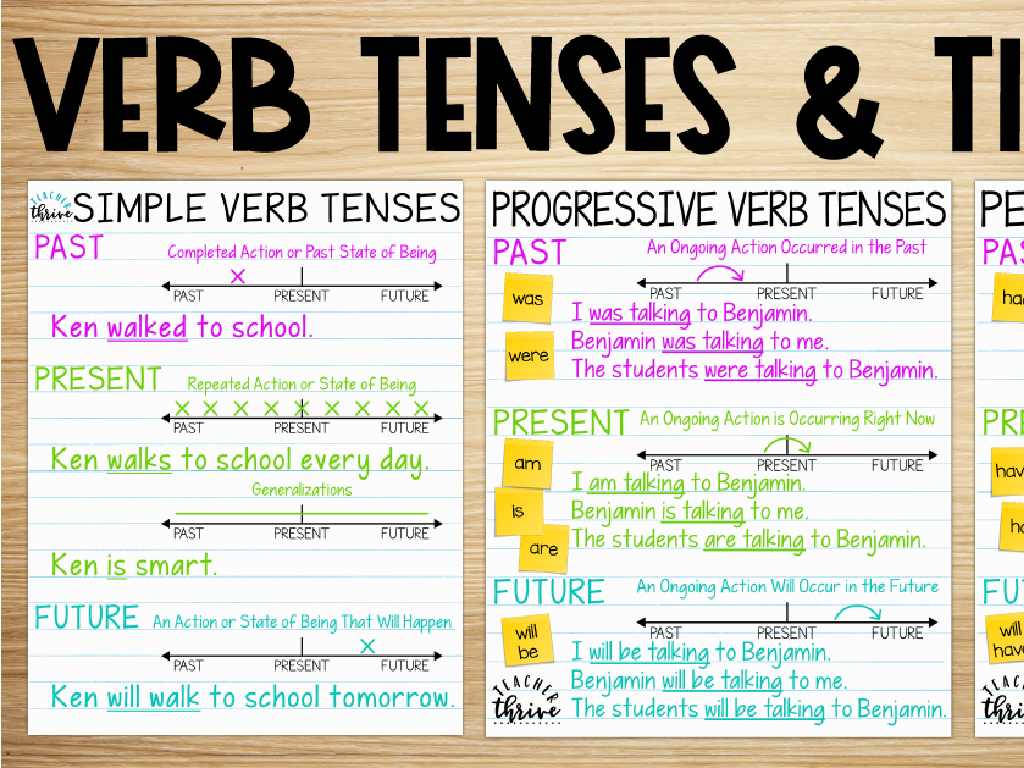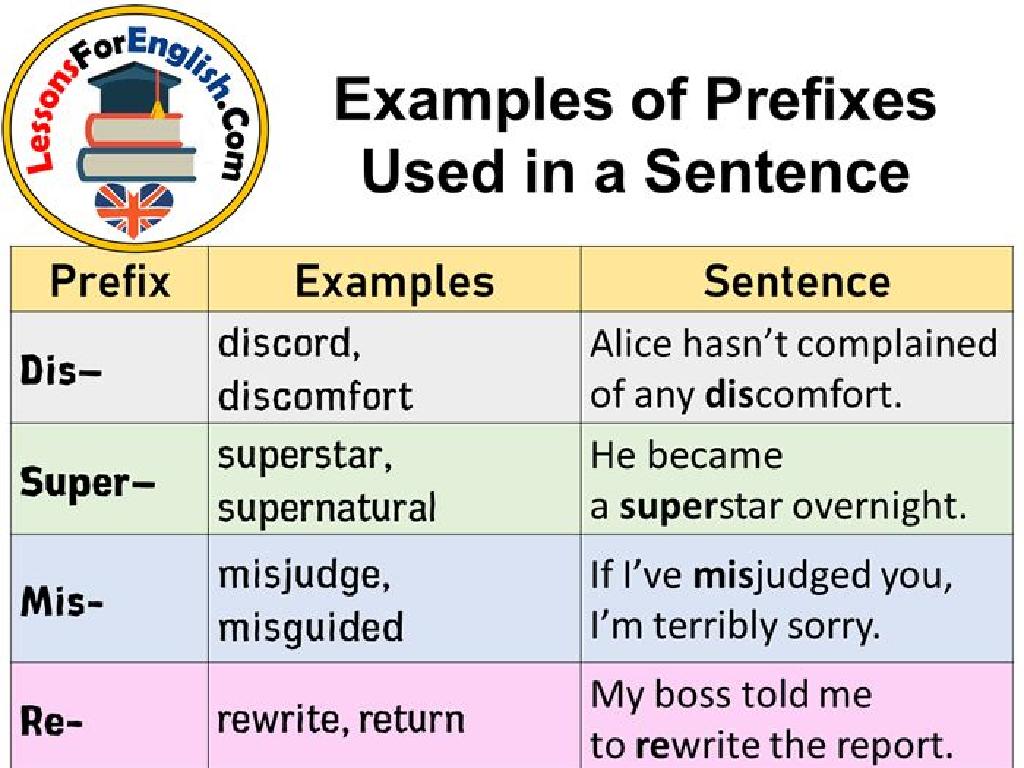Points, Lines, Line Segments, Rays, And Angles
Subject: Math
Grade: Fourth grade
Topic: Lines And Angles
Please LOG IN to download the presentation. Access is available to registered users only.
View More Content
Welcome to Lines and Angles!
– Today’s geometry basics
– Points and lines introduction
– A point marks a location, a line extends endlessly
– Exploring line segments and rays
– Line segments have two ends, rays have one
– Finding angles in our world
– Angles are formed where two lines meet
|
This slide introduces the fundamental concepts of geometry that will be the focus of today’s class. Begin by explaining that geometry is the branch of mathematics that deals with points, lines, shapes, and space. Introduce points as specific locations in space with no size, and lines as extending infinitely in both directions. Discuss line segments as parts of lines with two endpoints, and rays as lines that start at one point and extend infinitely in one direction. Highlight how angles are formed when two lines meet at a point. Use real-world examples like the corners of a book or the hands of a clock to illustrate these concepts. Encourage students to observe and identify these elements in the classroom and at home.
Exploring Geometric Foundations: What is a Point?
– A point indicates a location
– It’s like the exact place where two lines meet.
– Points have no size or dimensions
– No length, width, or depth just position.
– Imagine a dot: that’s a point!
– Like a pencil dot, it marks a spot without covering any space.
|
This slide introduces the concept of a point in geometry, which is one of the most fundamental elements. A point is simply a precise location in space. It’s important to emphasize to the students that a point has no actual size it’s just an idea that indicates position. To help them visualize, compare a point to a tiny dot they can make on their paper with a pencil. This dot is just a way to represent a point; in pure geometry, a point is even smaller than any dot we can draw. Encourage students to think of a point as the exact place where two lines would cross. This will set the foundation for understanding more complex geometric concepts.
Exploring Lines in Geometry
– A line extends infinitely
– Imagine it going on forever in both directions
– No start or end point
– Lines are always straight
– Like the edge of a ruler or a laser beam
– Lines do not curve
|
This slide introduces the concept of lines in geometry, which is fundamental for understanding shapes and space. Emphasize that a line is made up of an infinite number of points and extends without end in both directions, unlike a line segment which has two distinct endpoints. Use a visual aid, like a string or a laser pointer, to demonstrate a line extending in two directions. Explain that lines are always straight and do not curve, which distinguishes them from other geometric figures like curves or circles. Encourage students to visualize lines in the real world, such as the horizon or the sides of a book.
Exploring Line Segments
– Line segment has two endpoints
– Points A and B on a line, segment AB has endpoints A and B
– It’s a portion of a line
– Think of a line segment as a straight path between two points
– Line segment length is measurable
– Use a ruler to measure from one end to the other
– Understanding line segments
|
This slide introduces the concept of line segments to fourth-grade students. A line segment is a part of a line that has two defined endpoints, which means it starts at one point and ends at another, unlike a line that extends infinitely in both directions. Emphasize that the length of a line segment is the distance between its two endpoints and can be measured using a ruler or other measuring tools. This concept is fundamental in understanding geometry and will be used in future lessons involving shapes and space. Encourage students to think of real-world examples of line segments, such as the edge of a book or a pencil, and to practice drawing and measuring them.
Exploring Rays in Geometry
– Definition of a ray
– A ray has one fixed starting point and extends endlessly in one direction.
– Ray characteristics
– It has one endpoint and no end on the other side.
– Sunlight as an example
– Sun rays start at the sun and travel endlessly through space.
|
Introduce the concept of rays by defining them as lines that start at a point and extend infinitely in one direction. Explain that rays have one endpoint, known as the origin, but unlike a line segment, they do not have a second endpoint. Use the analogy of sunlight to help students visualize rays; just as sunlight starts at the sun and travels outward without end, a geometric ray starts at one point and goes on forever. This will help students understand the concept of infinity in a tangible way. Encourage students to draw their own rays and think of other real-life examples.
Understanding Angles
– Angles: When two rays meet
– Imagine opening a book – the rays are the pages, and the spine is the vertex.
– The meeting point: Vertex
– It’s like the corner of a square or the tip of a star.
– Measuring angles in degrees
– Just like we measure temperature, we use degrees to see how wide an angle is.
– Exploring different angles
– We’ll look at acute, right, obtuse, and straight angles.
|
This slide introduces the concept of angles to fourth-grade students. Begin by explaining that an angle is created when two rays (or lines) come together at a single point, much like the pages of a book meeting at the spine. The point of convergence is known as the vertex, akin to the corner of a square or the tip of a star. Angles are measured in degrees, which helps us understand the ‘openness’ of an angle. Use a protractor as a visual aid to show how degrees work. Finally, discuss different types of angles such as acute, right, obtuse, and straight, providing examples for each. Encourage students to find angles in the classroom to relate the concept to real-life objects.
Exploring Types of Angles
– Acute angles: less than 90 degrees
– Like the sharp corner of a pizza slice
– Right angles: exactly 90 degrees
– The corner of a square or the hands of a clock at 3:00
– Obtuse angles: between 90 and 180 degrees
– Like the hands of a clock at 4:00
– Straight angles: exactly 180 degrees
– A straight line, like the edge of a ruler or a horizon
|
This slide introduces students to the concept of angles and their different types. An acute angle is sharp and less than 90 degrees, often illustrated by the corner of a pizza slice. A right angle is the cornerstone of understanding angles and is exactly 90 degrees, like the corner of a square or when the clock shows 3:00. Obtuse angles are wider, more than 90 degrees but less than 180, similar to the hands of a clock at 4:00. A straight angle is a straight line and measures exactly 180 degrees, which can be visualized as the edge of a ruler or the line where the sky meets the ground. Encourage students to find and draw examples of each type of angle for a better understanding.
Identifying Lines and Angles Around Us
– Find classroom lines and angles
– Look for points, lines, segments, rays, angles
– Discuss real-life examples
– Where do you see these outside school?
– Understand practical applications
– How do lines and angles help in daily life?
– Activity: Classroom scavenger hunt
|
This slide aims to help students recognize geometric concepts in their immediate environment and understand their relevance. Encourage students to search for points (corners of a book), lines (edges of a whiteboard), line segments (pencil lengths), rays (sunbeams entering through a window), and angles (opened door angle) in the classroom. Facilitate a discussion on where these elements appear in the world around them, such as roads (lines) and slices of pizza (angles). Highlight the importance of these concepts in construction, art, and navigation. Organize a classroom scavenger hunt as an activity where students find and list examples of each geometric element. This interactive approach solidifies their understanding and makes learning fun.
Class Activity: Creating with Lines and Angles
– Draw points, lines, segments, rays, angles
– Use a ruler for straight lines and angles
– A ruler ensures accuracy in your drawings
– Create a picture with lines and angles
– Combine the elements to form a creative picture
– Share your artwork with the class
– Explain the types of lines and angles used
|
This activity is designed to reinforce the concepts of points, lines, line segments, rays, and angles by integrating art with geometry. Provide students with rulers and protractors if available. Encourage creativity while ensuring they apply the correct geometric concepts. Possible activities: 1) Drawing a house using various lines and angles, 2) Creating a sun with rays extending outward, 3) Sketching a geometrically-inspired tree, 4) Designing a scene with a combination of different geometric elements. After completion, have students present their artwork and describe the geometric components they included. This will help them articulate their understanding and recognize these elements in the world around them.
Review and Practice: Geometry Fundamentals
– Recap: Points, Lines, and Segments
– A quick review of what we’ve learned about basic geometric terms.
– Pair up for practice problems
– Work together to solve geometry problems and help each other.
– Discuss rays and angles
– Understand how rays differ from lines and what angles are.
– Get ready to present solutions
|
This slide is aimed at reinforcing the students’ understanding of basic geometric concepts. Start with a quick recap of points, lines, and line segments to ensure that the foundational knowledge is solid. Then, have the students pair up to tackle practice problems; this collaborative approach allows them to learn from each other and clarify any misunderstandings. Move on to discussing rays and angles, highlighting how they relate to and differ from the concepts reviewed. Finally, prepare the students to share their answers with the class, which will help build their confidence in speaking about math concepts and ensure active participation.
Wrapping Up: Lines and Angles
– Recap: Points, Lines, Segments, Rays, Angles
– Homework: Find and draw examples
– Look around your home for real-life examples
– Draw each in your notebook
– Use a ruler for straight lines and segments
– Share your examples in class tomorrow
– Choose one example of each to present
|
As we conclude today’s lesson, remind students of the key concepts: points are locations, lines are endless, line segments have two endpoints, rays start at one point and go on forever in one direction, and angles are formed by two rays with a common endpoint. For homework, students should observe their surroundings at home to find and draw examples of each concept in their notebooks. Encourage creativity and application of today’s lesson to the real world. Tomorrow, each student will have the opportunity to present their findings, reinforcing their understanding and allowing them to see a variety of examples from their peers.





